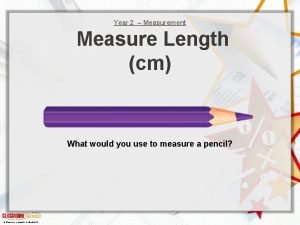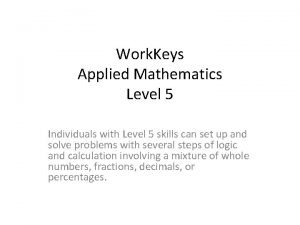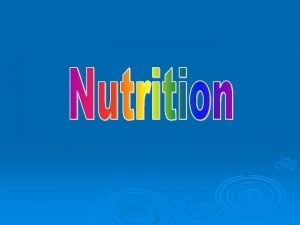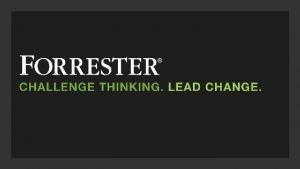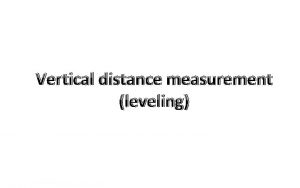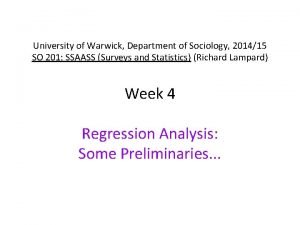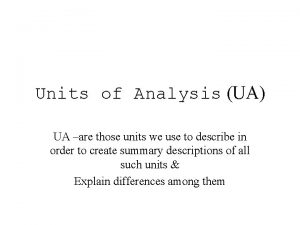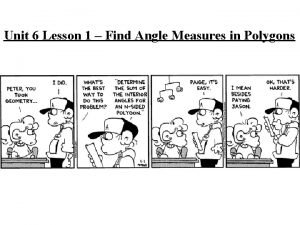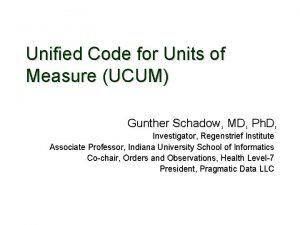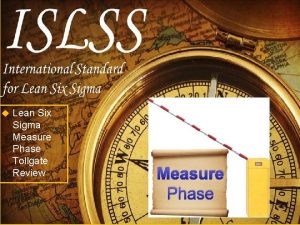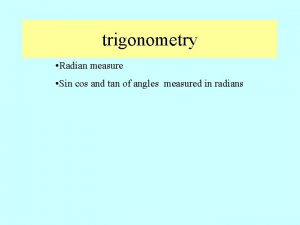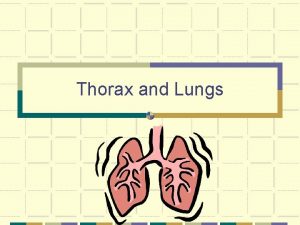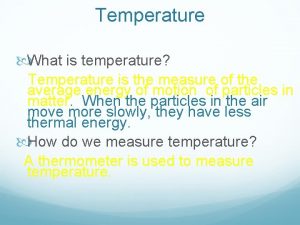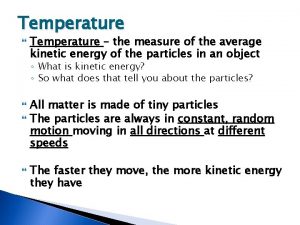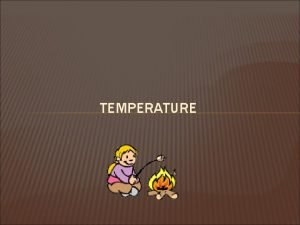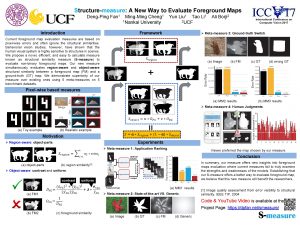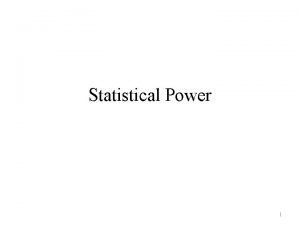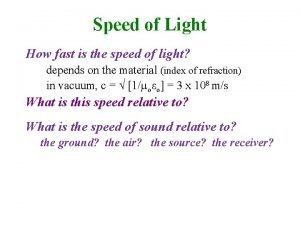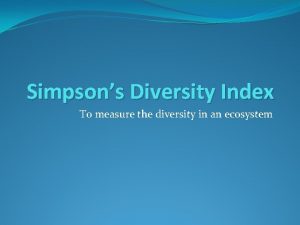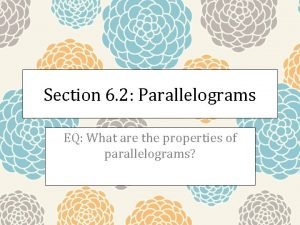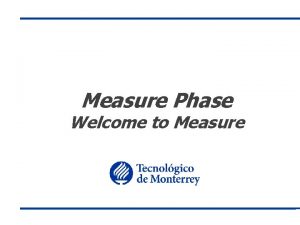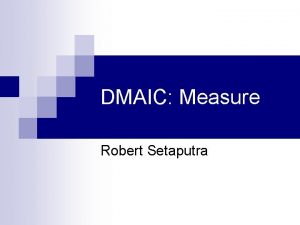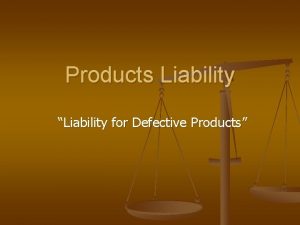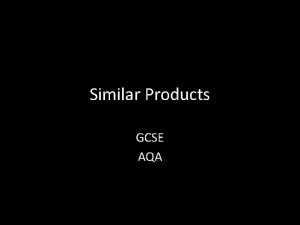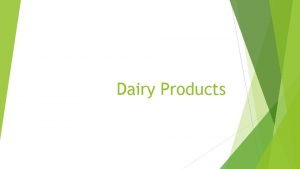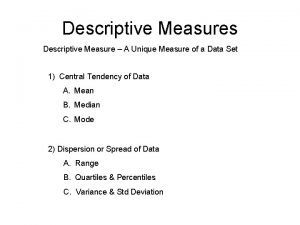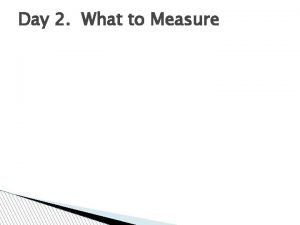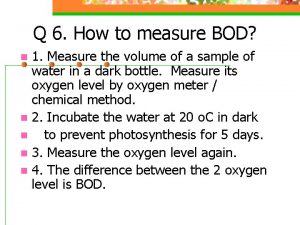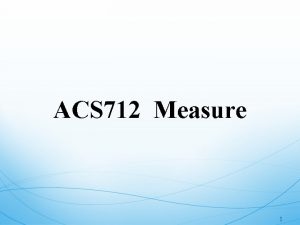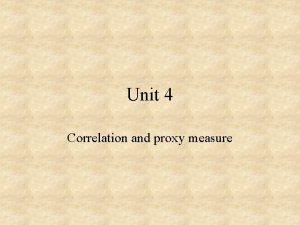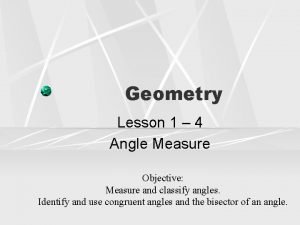MEANING It is a measure of how products






























- Slides: 30


MEANING • It is a measure of how products and services supplied by a company meet or surpass the customer’s expectations. • Customer expectation is the needs, wants, and preconceived ideas of a customer about a product or a service. • If customer expectations are met then the customer is satisfied.

Why customer satisfaction • Customer is the boss of the market. • Customer dictates market trends and direction. • The organization is dependent on the customer and not the other way round. • Customer satisfaction means loyalty towards the organization. • The satisfied customers will help in bringing the new customers by the “word of mouth”.


Who is the customer? One who uses the product or service, the one who purchases the product or service or the one who influences the product or service. Two types of customers: Internal customers External customers

Two types of customers: • Internal Customer : are people, departments, units and groups within an organization served by what we do. • External Customer : are end users of the organization's product or services depositors, borrowers, investors, etc.

Factors affecting customer satisfaction • PRICE - micromax • QUALITY - rolls royce • SERVICE - dell • BRAND NAME - apple • REPUTATION - nokia • FEATURES - samsung

Customer satisfaction Model: (Teboul Model) Company offer (product or service) Needs not fulfilled Customer needs Customer satisfaction Total satisfaction is achieved when offer matches the need i. e. circle is superimposed on the square

Customer perception of quality: An American Society for quality (ASQ) survey on customer perception about quality of product or service shows the following ranking. 1. 2. 3. 4. 5. 6. Performance Features Service Warranty Price Reputation

Customer perception of quality: An American Society for quality (ASQ) survey on customer perception about quality of product or service shows the following ranking. 1. 2. 3. 4. 5. 6. Performance Features Service Warranty Price Reputation

Service organizations and customer satisfaction • Difficult but not impossible • • • Determine key performance indicators Set Targets – SMART goals Make teams Analyze them on weekly basis Standardize Sustain

Why customers leave? Others, 9% Better prices elsewhere, 9% Product dissatisfaction, 13% Poor service 69%

Categories of customers: Angry customers Demanding customers Passive customers

Difference between ……… Good service Bad service Excellent service

Good Customer Service Good service is when the customer gets treatment that meets his/her expectations. Customer Expectation What Customer receives

Bad Customer Service Bad Service is when customer gets treatment which is less than his/her expectations Customer Expectation What Customer receives

Excellent Customer Service When the customer gets a little more than what he/she expected, Good Service becomes Excellent Service + Customer Expectation What Customer receives

Kano Model: (Dr. Nariaki Kano) Kano model distinguishes between three types of product or service requirements which influence customer satisfaction in different ways when met. 1. 2. 3. Basic attributes Performance attributes Excitement attributes

Delighters 0% 100%

1. Basic Needs – Dissatisfiers A dissatisfiers is a product or service characteristics that the customer takes for granted. Absence of basic attributes results in extreme customer dissatisfaction. Customer complaints are the primary source of information on existing dissatisfiers in our current product or service.

2. Performance Needs – Satisfiers A satisfier is something that customer want in their product or service, and usually ask for it. Better the performance more will be the customer satisfaction. They are easy to measure and they become the benchmarks used for competitive analysis.

3. Excitement Needs – Delighters A delighter is unspoken or unexpected requirement of a customer and can result into high level of customer satisfaction. Delighters are sometimes called exciting quality. Absence of delighter doesn’t result into customer dissatisfaction while its presence can help in enhancing customer satisfaction.

Customer Characteristics: 1. Innovators o Representing about 3 % of the market o They are the first to adopt an innovation o Young, high social status, good financial shape, broad social relationship o Rely on non personal sources of info. Such as advertisement.

2. Early adopters: o Comprising about 13 % of the market o They purchase a new product or service after innovators but sooner than other consumers o High social status o Sales people are used as info. Sources o 3. Early Majority: o Comprising about 34 % of the market This group is above average in social & o economic measures Rely on ads, sales person & contact with early adopters

4. Late Majority : o Representing about 34 % of the market o Adopt an innovation to save money or in response to social pressure from their peers o Rely on members of the early & late majorities as source of info. 5. Laggards: o Comprising about 16 % of the market o Last to adopt an innovation o Older & usually are at the low end of the social & economic scales

How to ensure customer satisfaction • Surveys • Customer feedback • Comparison with alternatives • Employee feedback • Internet/blogs • Toll free numbers

CUSTOMER FEEDBACK • Customer feedback must be continually done and monitored. It enables an organization to: • Discover customer’s dissatisfaction • Discover relative priorities of quality • Identify customer need • Determine opportunities for improvement

CUSTOMER SATISFACTION FACTS • 5% increase in loyalty can increase profits by 25% to 85%. • Only 4% of unsatisfied customers will complain. • An unhappy customer tells 9 other people. • A happy customers tells to about 5 other people.

CUSTOMER RETENTION • Customer satisfaction should lead to customer loyalty and customer retention. • This is the real test and bottom line- when the customer repeatedly comes back to you for repeat orders and to purchase new products manufactured by you. (In spite of stiff competition and multiple Suppliers/Sources! ) • Firm orders received or cash payments registered , market share, customer referrals and customer retention are an indication of your customer success and penetration in the market.

 Gibbons jacobean city comedy download
Gibbons jacobean city comedy download An instrument used to measure temperature
An instrument used to measure temperature Functional vs innovative supply chain
Functional vs innovative supply chain Pepsi vs coke marketing strategy
Pepsi vs coke marketing strategy If you can't measure it you can't improve it quote
If you can't measure it you can't improve it quote Measure thrice and cut once meaning
Measure thrice and cut once meaning What would you use to measure a pencil
What would you use to measure a pencil Workkeys applied mathematics level 4 answers
Workkeys applied mathematics level 4 answers What is aimsweb plus
What is aimsweb plus Food scientists measure food energy in
Food scientists measure food energy in Quantile measure
Quantile measure Cx metrics framework
Cx metrics framework Vertical distance measurement in surveying
Vertical distance measurement in surveying Jvp measurement
Jvp measurement What does t test measure
What does t test measure Ua unit of measure
Ua unit of measure 360 n
360 n Uccum
Uccum Tollgate review
Tollgate review Rad sin cos tan
Rad sin cos tan Vertical jump
Vertical jump Posterior chest
Posterior chest What does temperature measure
What does temperature measure Measurement of average kinetic energy
Measurement of average kinetic energy Temperature is a measure of the average:
Temperature is a measure of the average: Axillary temperature abbreviation
Axillary temperature abbreviation Structure-measure: a new way to evaluate foreground maps
Structure-measure: a new way to evaluate foreground maps What does effect size measure
What does effect size measure Speed of light constant
Speed of light constant Simpson's index equation
Simpson's index equation Find lm in parallelogram lmnq.
Find lm in parallelogram lmnq.






